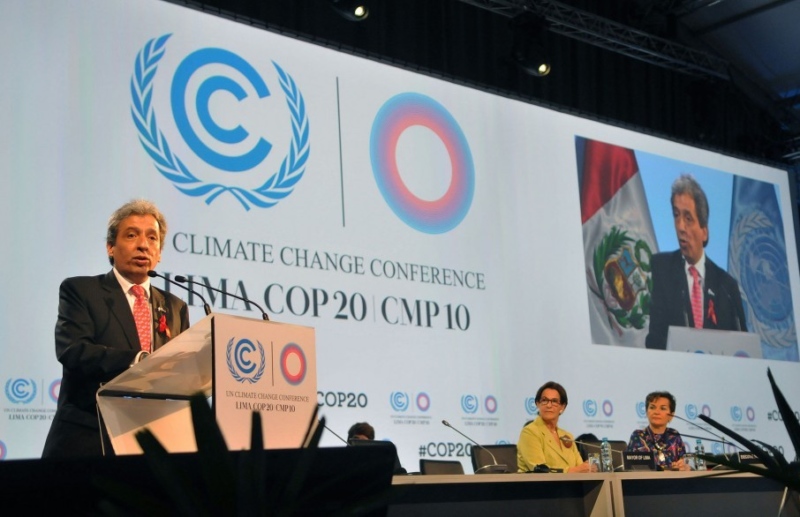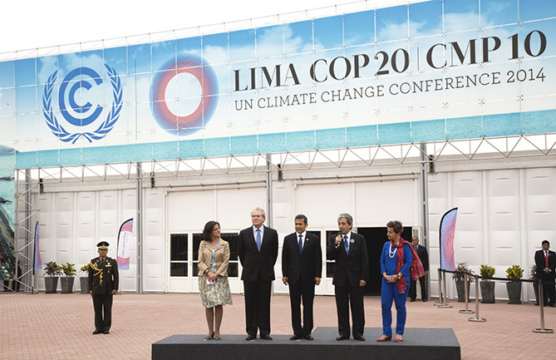Bolivia & the Global Fight Against Climate Change
In the past year, the Bolivian government has emerged as an outspoken critic of climate change policies.
In December, world leaders will travel to Lima, Peru to participate in United Nations COP 20 talks. In the lead-up to the meeting, experts weighed in on climate change policy in Latin America at a panel hosted by the Inter-American Dialogue in Washington, DC.
Protecting future generations from the impacts of climate change compels us to take action now, Peru’s Ambassador to the United States Harold Forsyth said in opening remarks. But the effects of climate change are already being felt in the Western Hemisphere, according to Augusto de la Torre, Chief Economist for Latin America and the Caribbean at the World Bank. Glacial melting has begun to impact water supply and distribution. Coral bleaching has accelerated in the Caribbean. Sea levels are rising, while the incidence of hurricanes and tropical storms has increased. Shifting temperatures and greater volatility in weather patterns threaten agricultural yields.
Latin American and Caribbean countries are together responsible for roughly 12 percent of global greenhouse gas emissions while accounting for just 9 percent of the world’s income. With roughly 30 percent of the world’s biomass stored in the forests of Latin America, deforestation and the expansion of agricultural lands are major contributors to the region’s carbon footprint. A recent decline in deforestation in Latin America, however, has reduced emissions over the past decade. The region’s energy matrix is also the cleanest in the world, due to its heavy dependence on hydropower. Still, current trends – such as the growth of the transportation sector and increasing share of coal and natural gas in electricity generation – will likely increase greenhouse gas production.
These and related issues will take the spotlight at the UN climate conference in Lima, which is expected to lay the groundwork for a binding climate agreement to be signed in Paris in late 2015. Jorge Gastelumendi, Senior Advisor on international climate policy at The Nature Conservancy, explained that talks have evolved significantly since the landmark Kyoto meeting in 1997 and the high-profile Copenhagen conference of 2009. A “bottom-up” approach – that starts with each country making a pledge toward emissions reductions -- and greater transparency are expected to pave the way for further cooperation. Gloria Visconti, Lead Climate Change Specialist at the Inter-American Development Bank, also noted the importance of bringing not only environment but also finance and planning ministries into the discussion to ensure climate policies are included in government budgets.
In Lima, negotiators will need to hammer out the major features of a future climate framework. Differentiation of responsibilities between developed economies and emerging markets will be a key part of this puzzle, said Gastelumendi. Establishing a system for assessment, review and revision is also critical for climate policy. Many Latin American countries – including Peru, Colombia, Chile and Guatemala – have played a “progressive” role in the talks, seeking binding commitments for mitigation and adaptation. But more must still be done to attract private capital, according to Visconti. Public budgets alone are not enough to scale up renewables, improve energy efficiency, and develop new technologies.
Panelists concluded that the greatest challenges for climate negotiations are political rather than technical. Bottom-up politics won’t sufficiently address the enormous challenge of global climate change, argued de la Torre. Greater leadership is needed from major players – especially the United States and China– to reach the threshold of emissions reductions needed to avoid the worst effects of climate change. There is some hope for more leadership from both Washington and Beijing, moderator John Fialka of ClimateWire reflected. Obama has taken climate policy further than any U.S. president, while domestic concerns over pollution in China have provided strong incentives to cut back on coal and other dirty fuels. However, greater attention to these issues is needed from policymakers, business leaders and the public to drive change on climate policy.
In the past year, the Bolivian government has emerged as an outspoken critic of climate change policies.
As global temperatures continue to rise with the global community stalled on any way to stop them, countries must prepare to adapt to increasingly volatile environmental conditions.
What are the opportunities for progress and regional cooperation on climate change in the Americas?
 Peruvian Ministry of Foreign Relations / CC BY-SA 2.0
Peruvian Ministry of Foreign Relations / CC BY-SA 2.0
